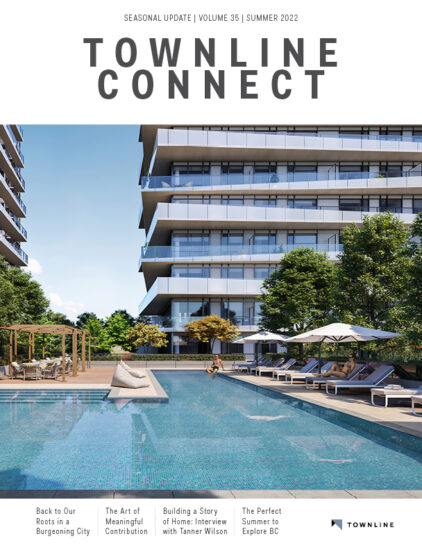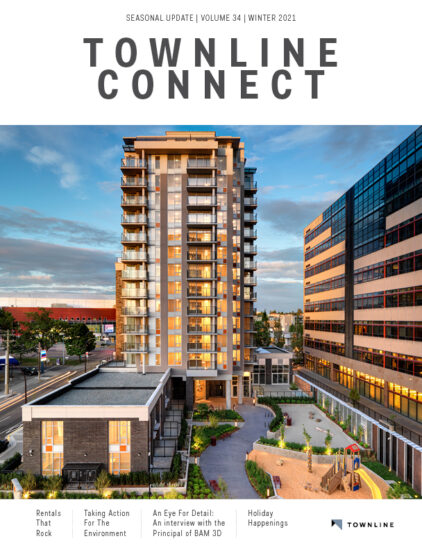
It’s the most comprehensive and stringent program of its type in Canada. Introduced in 1999, British Columbia’s 2-5-10 Home Warranty was created to give peace of mind to BC homeowners making one of the largest single investments of their lives.
This issue Kerry Nagy, Assistant Vice President at Travelers Canada provides the inside scoop on everything you need to know about the coverage that comes with your brand new home.
Understand the Rules
Kerry’s first tip is surprisingly straightforward. Read the warranty… especially the fine print. “Most people don’t even read the summary never mind the entire document,” he says. “Yes, it can look intimidating, but it’s there to protect you and your investment.”
In 2011, homeowners also received a new tool to help them navigate the details. “Previously, every warranty provider had their own performance guide so information wasn’t always presented the same way,” Kerry explains. “In 2011, the government introduced a standardized, online guide making coverage more transparent and easy to understand.”
Now you can search for general information, confirm whether your warranty issue is covered, and ask questions about specific builders and coverage providers. Details like how long a company has been in business and what their customer service reputation is like can be invaluable in the home buying process.
Be Proactive
Homebuyers have an obligation to maintain their new home. “Most of it is simple, common sense things like using the dehumidifier in the bathrooms to minimize condensation build up and cleaning your dryer vents on a regular basis,” Kerry says. “Or, in a single family home, if you let organics like leaves build up in your gutters and rainwater overflows staining the trim boards and the deck below, that damage falls outside warranty coverage.” Condominiums and townhomes will have different requirements from single family homes because many maintenance items are covered through the strata.
Regardless of the type of new home that’s been purchased, if a problem occurs, the owner has a responsibility to mitigate against increased damage. “Sometimes people ignore a problem for months before they report it,” Kerry says. Unfortunately, waiting to report the problem could reduce or even nullify your coverage for that item.
Put It in Writing
While it’s common practice for owners to contact their builder directly, Kerry recommends against it. “Put your concern in writing and submit it to your warranty provider. They will send it to the builder on your behalf, and give them the opportunity to address the problem. If the builder can’t or won’t fix it, then we take over.” What’s critical is getting the process underway within the warranty period. “Once you open a claim, it stays open until the issue is rectified, and you then have a minimum of another full year of coverage from the date of completion on all items that were deemed to be defective — even if the initial warranty has expired.”
Kerry also stresses the value of keeping a list of anything that doesn’t seem quite right from day one — no matter how seemingly insignificant the concern might be — so you’ve got documentation if it turns into a problem later.
Making Changes
Be aware that upgrading the builder’s finishes in your brand new home may limit your warranty coverage.
For example, if you change your living room floors and bathroom tiles, those new products will no longer fall under warranty. The good news is that if the issue is with the floor itself (perhaps it’s out of level), you’re still covered. One slightly grey area is when you modify only a portion of some element of your home — like a section of siding. “That probably won’t remove the whole facade or exterior from coverage,” Kerry says. “But if the section you replaced is deemed to cause an envelope failure, the homeowner will be responsible.” In the event of damage, it comes down to cause. If the builder is at fault, they are obligated to fix the defect and any resulting damage. But the same caveat applies. “Your warranty only covers what was originally there. Let’s say you bought a townhouse with an unfinished basement that you later converted into a guest suite and rec room. If there was a plumbing leak later the warranty does not cover any of the materials you’ve put in — although you should be able to claim those under your homeowner insurance policy.”
The Bottom Line
“In our business, we work with some of the best builders in British Columbia,” Kerry says. “But even the best builders aren’t going to be perfect. Things like nail pops or cracks in the drywall are going to happen sometimes. In the end, most people just want the problem fixed so they can have peace of mind and enjoy their new home. This is exactly what we’re here for.”
Past Volumes

Volume 35
Summer 2022
Click below to read

Volume 34
Winter 2021
Click below to read

Volume 33
Summer 2021
Click below to read

Volume 32
Winter 2020
Click below to read